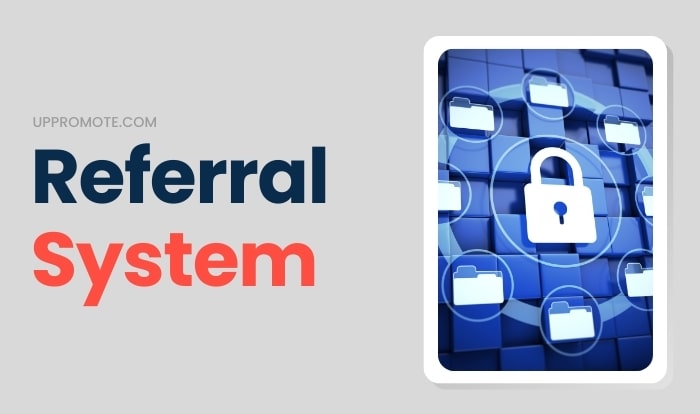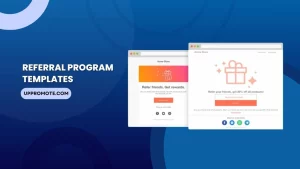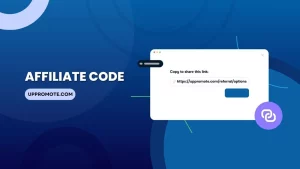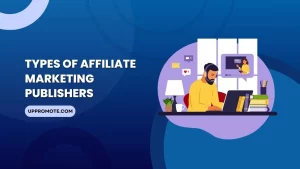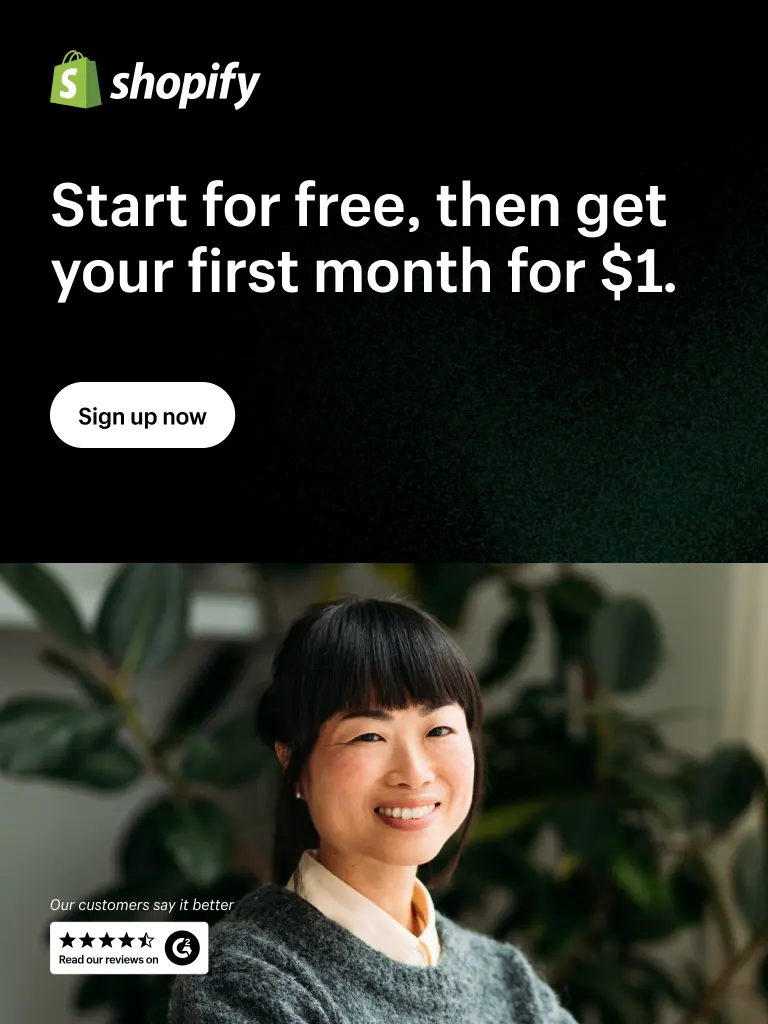Attracting new customers is crucial for any brand’s success. But what if you could tap into the power of your existing satisfied customers to drive growth? That’s where referral systems come in. Then, what is a referral system?
These programs incentivize happy customers to recommend your brand to their networks. They act as a powerful word-of-mouth marketing engine.
This guide explains the detailed steps of building an effective referral system. We will assist you in unlocking the potential of your loyal advocates!
What is A Referral System?
Referral marketing is a word-of-mouth marketing strategy. It holds immense power, as people are more likely to trust their friends and family.
It rewards existing customers for spreading the word about your brand. Positive experiences are spread to friends and family by satisfied customers.
This small deed may have far-reaching consequences. Why? Because it generates a steady stream of high-quality leads. Their networks are more likely to convert and become loyal customers.
For each successful referral, you provide referral awards, such as discount codes and freebies. By that, you translate positive experiences into specific actions and boost sales.
A referral system provides a structured and streamlined approach to referral marketing. It provides the tools and processes to make sharing easy for customers. They can track their referrals and receive incentives for their efforts.
In brief, referral marketing is the strategy and philosophy. A referral system is the practical toolkit that puts the plan into action.
Critical Components of a Referral System:
- Incentives: Defining what referrers and new customers receive.
- Sharing tools: Unique referral links, social buttons, etc.
- Tracking: Monitoring referral sources, conversion rates, and success.
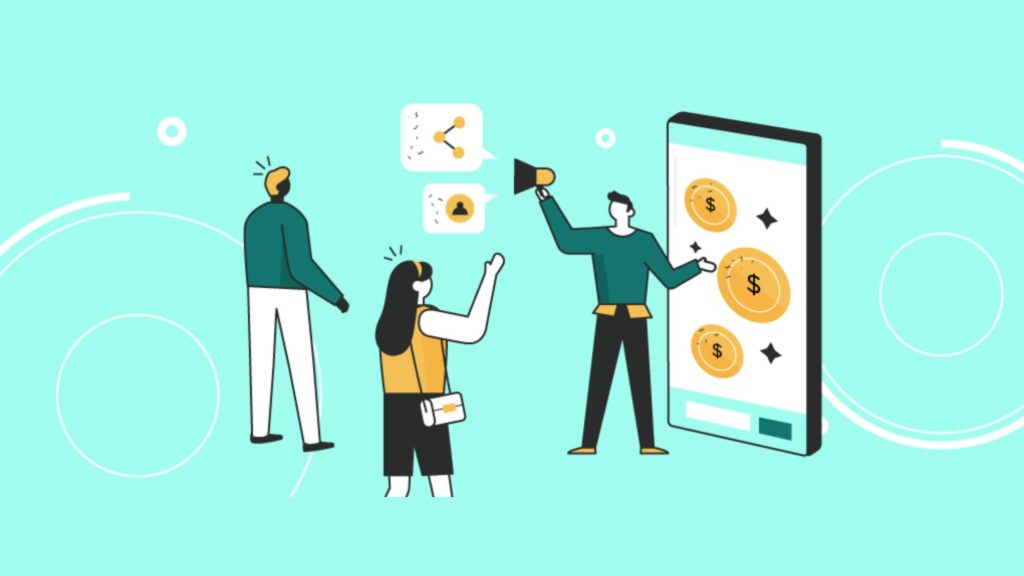
How Does a Referral System Work?
A referral system operates on a simple yet powerful principle. It is to incentivize existing customers to share your brand with their networks. This leverages the inherent trust existing customers hold for your brand. This simple concept can create a viral loop of new customer acquisition.
In a referral system, three key entries join
- Referrer: The existing customer who recommends your product or service to others. Their role is to:
- Share: They share your brand through various channels like email or social media. They attach their unique referral links to invite others to join.
- Advocate: They become brand advocates. They will enthusiastically promote your offerings based on their positive experience.
- Referred customer (or Referee): The individual who receives the recommendation from the referrer. Their role is to:
- Learn: They learn about your brand through the referral. They find interest and explore your offerings further.
- Engage: This might involve visiting your website, signing up for a trial, or making a sale. Ultimately, they become new customers.
- Brand: The company offering the referral friend program. It aims to get new customers and increase sales through this marketing strategy.
In some cases, referral programs may involve extra entries:
- Influencers: Individuals with established online communities. They can leverage their reach to promote the program and generate referrals.
- Affiliates: Independent partners who promote your brand through their website or other channels. They receive commissions for referring customers who take action.
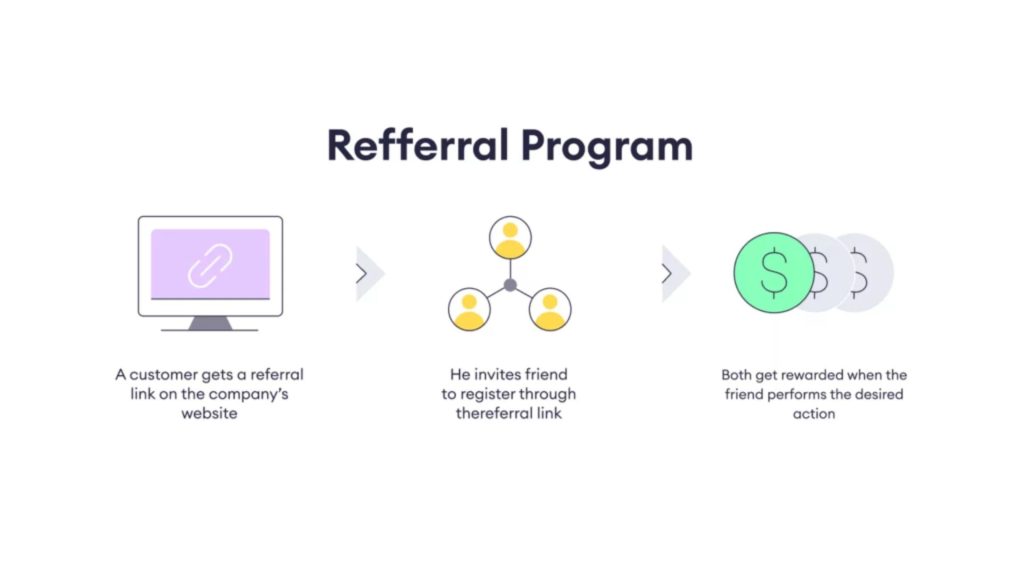
The core of a successful referral program lies in understanding social currency. People are more likely to share experiences that enhance their social image. Providing value is the most effective way for merchants to earn social currency.
So, an effective referral campaign is like having many mini-marketers working for you. You can create a cycle of new customers and brand advocates by offering rewards. Compared to traditional referral marketing methods, the impact of customer referral programs is stronger.
How Does A Referral System Benefit Your Business?
After knowing what a referral system is, you can see referral programs are not only trendy tactics. They offer tangible rewards that can impact your bottom line and brand perception. In brief, referral programs offer cost-effectiveness, trust-building, and long-term revenue generation.
Cost-Effective Customer Acquisition
Traditional marketing can drain your wallet, especially with growing competition. Yet, referral programs offer a cost-effective method without relying on expensive ads. Through current customers’ networks, you reach potential customers naturally.
According to a Wharton Business School study, referred clients were, on average, $0.45 more lucrative per day than any other customer.
Furthermore, compared to non-referred consumers, these customers’ CAC was $23.12 lower. Referred clients get a 60% higher return on investment (ROI) over six years.
- Reduced Cost per Acquisition (CPA): You no longer pay for every click or view. Referrals bring in new customers through trusted recommendations, saving you big bucks.
- Targeted Audience: Referrals often come from individuals like your existing customer base. It increases the likelihood of conversion and long-term value.
- Viral Potential: Happy customers sharing good experiences can create a chain reaction. Your brand can reach more number of potential customers without extra spending.
Successful merchants should turn their customers into brand champions. Thus, they can slash marketing costs and attract a large number of new customers.
Building Trust and Brand Advocacy
In today’s digital world, people are wary of traditional marketing messages. A 2020 BrightLocal survey revealed that 79% of customers saw online evaluations as being as trustworthy as recommendations from friends.
But by 2021, that number dropped to 49%. Referral programs tap into this natural trust. They build stronger bonds with your brand and create true fans.
Social Proof: Satisfied customers become walking billboards. They share positive experiences and confirm what you say about your brand.
- Real Deal: Recommendations from trusted friends feel genuine, resonating more than traditional ads.
- Increased Engagement: Participating in a referral program fosters deeper engagement with your brand. Because it fosters a feeling of belonging and community.
By nurturing relationships and encouraging advocacy, you build trust that regular marketing can’t. Successful referral programs lead to higher customer lifetime value and brand loyalty.
Sustainable Revenue Growth and Customer Retention
Did you know that 90% of referral programs link purchases to “successful conversions”? And over half of them reward people with store credit (SaaSquatch report). Beyond cost savings, referral programs are a powerful engine for long-term growth.
- Higher Customer Value: Referred customers tend to be more loyal and involved. That means they buy more and spend more over time.
- They Stay Longer: Happy customers who tell others about your brand are more likely to stay with you. Your brand may lose fewer customers and save money.
- Predictable Growth: Referral programs create a reliable source of new customers. A sustainable market is the essential ingredient for consistent business growth.
By building long-term relationships with customers, you create a steady stream of income. Their satisfaction with customer service determines your sustainable and profitable growth.
A Definitive Guide to Create An Effective Referral System
As a brand, advertiser, or merchant, you understand the value of customer acquisition. You can build your system whether you are an experienced marketer or a beginner. We’ll cover everything you need, from the basics to practical steps to launch.
Set up clear goals and KPIs
Before diving into the program design, it’s crucial to establish a firm foundation. You need to set up your goals and key performance indicators (KPIs). This clarity will guide your choices and track your progress.
Step 1: Define Your Goals:
- Brand awareness: Do you aim to reach new audiences and expand your brand footprint?
- Customer acquisition: Are you seeking to attract new customers efficiently and cost-effectively?
- Increased sales: Do you want to boost revenue by incentivizing referrals and conversions?
- Improved customer loyalty: Do you aim to encourage repeat purchases?
Step 2: Align Goals with KPIs:
Once you’ve identified your objectives, select measurable metrics to track progress:
- Number of referrals: Tracks the whole program participation and engagement.
- Conversion rate: Measures the percentage of referrals that convert to new customers.
- Cost per acquisition (CPA): Compares referral program costs to acquired customers.
- Customer lifetime value (CLTV): Analyzes the long-term revenue potential of referred customers.
- Referral source: Identifies which channels generate the most successful referrals.
Step 3: Set SMART Goals:
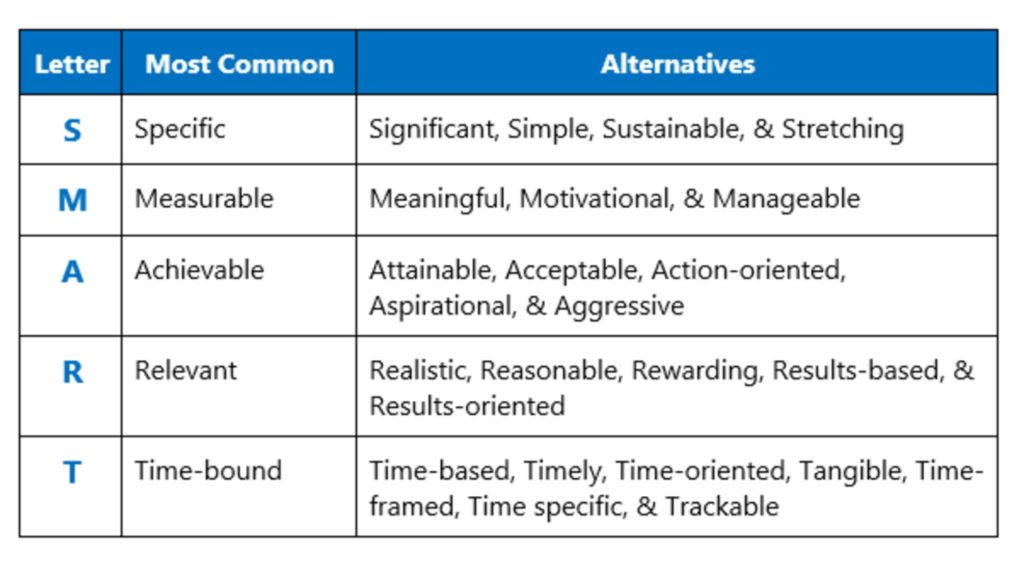
You make sure your objectives are time-bound, relevant, quantifiable, and explicit. You start with conservative targets and adjust them based on initial performance data. This ensures focus and clarity. It enhances the ability to assess progress and adapt your program as needed.
Understand your target audience
Every merchant needs to get inside the heads of their existing customers. Merchants must understand customers’ preferences, motivations, and digital habits.
Remember, a generic program won’t help. They have to tailor it to your specific audience. They base on customer data to craft a program that resonates and drives results.
It’s like building a bridge between your brand and current customers. The sturdier the bridge, the easier it is for referrals to flow!
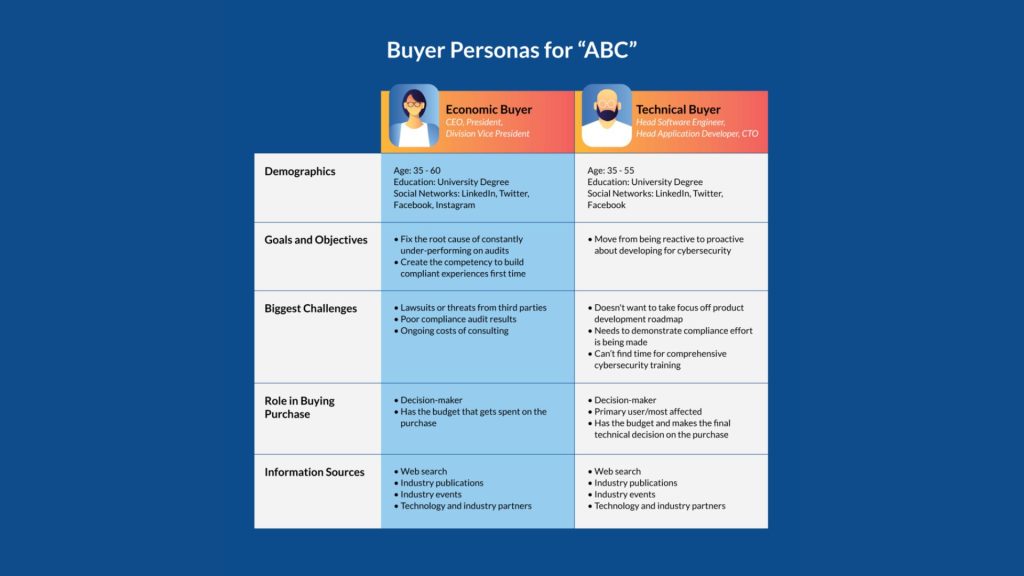
Step 1: Who are your customer champions?
- Demographics: Age, location, income, interests – paint a picture of your typical customer.
- Psychographics: What are their values, lifestyle, and online behavior? What drives them?
- Needs & Pain Points: What problems do they face? What solutions do they seek from your brand?
Step 2: How do they connect with you?
- Preferred channels: Do they engage more on email, social media, your app, or website?
- Content preferences: Do they prefer informative, entertaining, or interactive content?
- Referral motivators: What would motivate them to share your brand (discounts/social recognition)?
- What makes them tick?
- Brand loyalty: Are they passionate advocates or occasional users?
- Tech savviness: Are they comfortable with digital tools and sharing online?
- Incentive preferences: Discounts, gamification, or other rewards – what speaks to them?
Delving into these questions will create a clear picture of your ideal customer. This knowledge will guide every decision you make. For instance, your referral program ideas should give the right referral rewards. Then, customer insights support crafting compelling referral messaging.
Make it simple and easy to share
Our attention spans are getting shorter in this day of excessive information. User experiences must be effortless. This principle is especially true for referral programs. If sharing referrals feels like navigating a labyrinth, you risk losing valuable momentum.
Simplicity is not about offering fewer options. It’s about presenting them in a clear, intuitive, and effortless way. Simplicity encourages participation and maximizes the impact of your referral program.
How to ensure your program is delightfully simple and easy to share?
- One-click wonders: Accessible personal referral links or discount referral codes across your website and apps.
- Multi-channel sharing: Easy sharing across popular social media platforms, email, and apps.
- Pre-drafted messages: Customizable templates or suggested messages to streamline the sharing process.
- Visual appeal: Clear visuals and concise language through the referral process.
Choose attractive double-side incentives
The best referral programs have service upgrades and great rewards, not any kind. They need good deals for both the referrer and the referred customer. For the famous example in history?
Tesla has a referral program where both referrers and referred buyers can get rewards.
- Referrers can earn 10,000 reward credits for any car referral and 9,000 credits for any solar power system referral as of January 2024.
- On the other hand, referred Model 3 and Y buyers get $500 off their purchase price and three months of free Full Self-Driving (FSD).
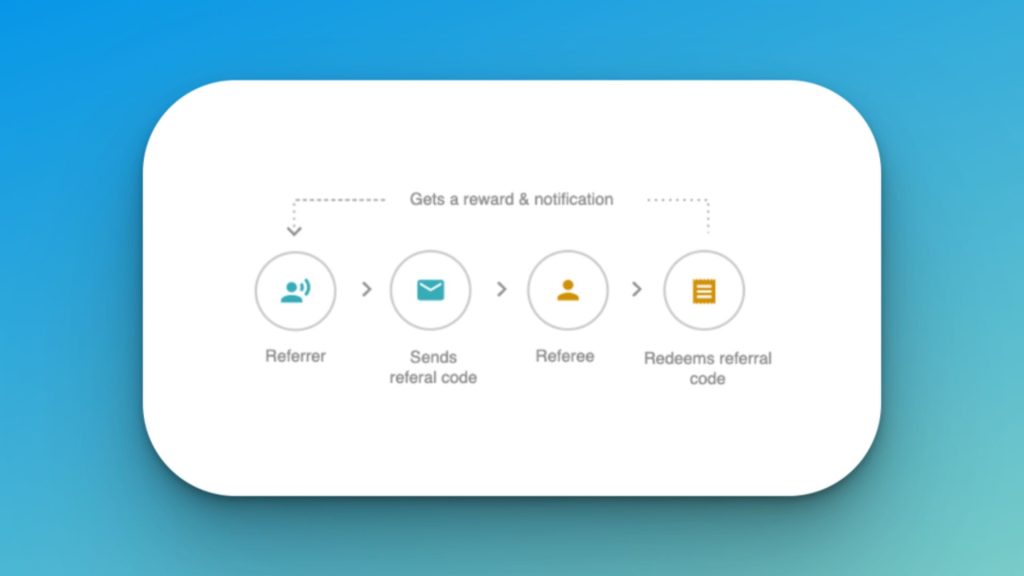
So crazy, but it is effective! There are some considerations when you choose attractive double-side referral incentives for your program!
For the Referrer:
- Cool rewards: Merchants can now skip the boring discounts. They offer special perks, early access to new stuff, or rewards based on how many people they tell.
- Tiered System: The more successful referrals, the better the rewards they get. This way creates a sense of achievement and progression.
- Gamification Elements: How about adding an element of fun and friendly competition? You can consider leaderboards, badges, or challenges.
- Public shout-outs: People always desire for social validation. You brag about active referrers on social media or in your community.
For the Referred Customer:
- Welcome gifts: Discounts, free trials, or extra items make new customers try your stuff.
- Personalized deals: You tailor the rewards to their specific needs and interests. You get the data from their referral source.
- Secret stuff: People desire a sense of privilege. So, you offer deals or early access available only through referrals. That sense will urge them to make a buy.
- Easy joining: A smooth onboarding experience to convert them into loyal customers.
So, the ultimate goal is to find the sweet spot that resonates with both parties. Two-sided incentives fuel both acquisition and engagement for your referral system.
Promote your program via multiple channels
Your program now resonates with your target audience and has exclusive referral rewards. However, how do you ensure it gets to the people you want to? How can you maximize the number of audiences?
By leveraging many communication channels, you can optimize awareness and encourage participation:
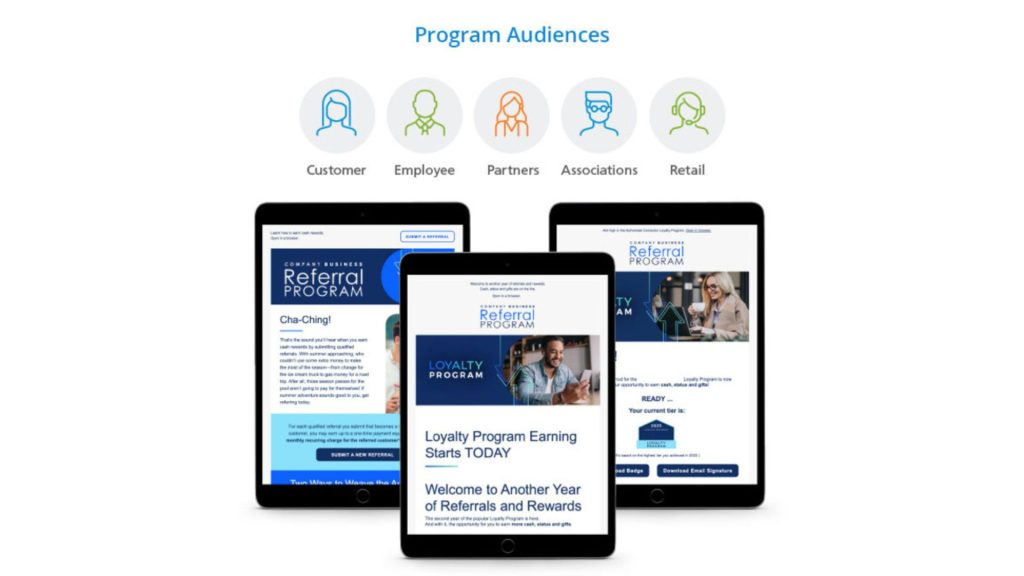
Website & App Integration:
- Website & App Integration: Program information on your main pages, product pages, and checkout. Let people know about it quickly!
- Dedicated landing page: with precise program details, FAQs, and referral links.
- Pop-up reminders: Sometimes well-timed pop-up reminders help! You remind people about your program when they’re already interested.
Email Marketing:
- Targeted messages: You send emails to different groups of people. Your emails highlight what matters to them about the program.
- Welcome emails: You say hello to your new happy customers. Emails sent to them cover all information about your system so they can start sharing.
- Transactional emails: You integrate referral reminders into order confirmation emails.
Social Media Engagement:
- Ads and posts: Some merchants run referral marketing programs for better awareness. Their campaigns contain eye-catching social media posts and ads to attract viewers.
- Collaborations: Merchants partner with relevant influencers to spread awareness and reach new audiences.
Offline Initiatives:
- In-store promotions: Signage, point-of-sale displays, and staff training in physical stores.
- Printed materials: Referral information on packaging or receipts.
- Events & sponsorships: For showcasing your program and generating interest.
Use a referral program software
Managing a successful referral program involves tracking referrals, rewarding participants, and analyzing results. This can become complex and time-consuming, especially for larger programs. Luckily, there’s referral program software to help!
When choosing referral software, it’s essential to consider several vital features.
First and foremost, ease of use is crucial. Next is to ensure the software provides the rewards, tracking capabilities, and comprehensive reports. Scalability is another critical factor. And lastly, take into account pricing and integrations.
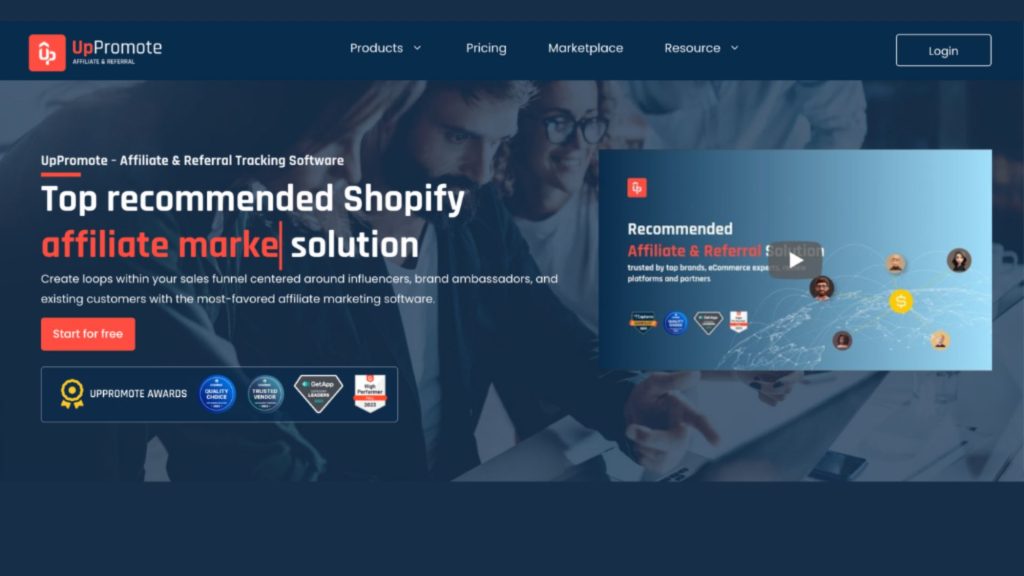
Out of all the options, UpPromote is a top choice for referral program software. It’s a toolbox with everything you need to start and manage your program smoothly. Besides, it offers great customer service to help you out.
Why do we say that?
- UpPromote’s referral program is easy to set up with just one click.
- The program has a noticeable widget that can be customized and placed on your website.
- Potent rewards are offered for both customers and their referred friends.
- In-depth reports are provided that can be filtered by date and time.
- The program sends prompt reward emails that can be customized.
What Makes A Good Referral Program?
Referral programs can be a goldmine for generating high-quality leads. So, various merchants desire to take advantage of that goldmine. With countless programs vying for attention, what separates the effective from the rest?
Let’s delve into the key ingredients that make a referral program shine:
Sweet Deals for Everyone
Nobody shares things out of the kindness of their hearts. So, a good program is a win-win for both sides. Referrers get cool rewards like discounts, special prizes, or even points in a fun game. Referees get something awesome too, like a discount on their first purchase.
Everyone enjoys the benefits! Yet, you should keep in mind that rewards should align with your profit margins.
Sharing Made Easy
Sharing your program should be as simple as sharing a funny cat video. Existing customers can share on email, social media, or even your website. Pre-written messages and special links shorten the direct referrals.
Besides, good programs work smoothly on phones because nobody likes a glitchy experience.
Multi-Channel Promotion
Your program won’t be effective if nobody knows about it. Let’s pave the way to your success by advertising your program everywhere! Your program should appear on your website, app, emails, and social media. Even posters in the cafeteria can help your brand!
What is a referral system’s good example?
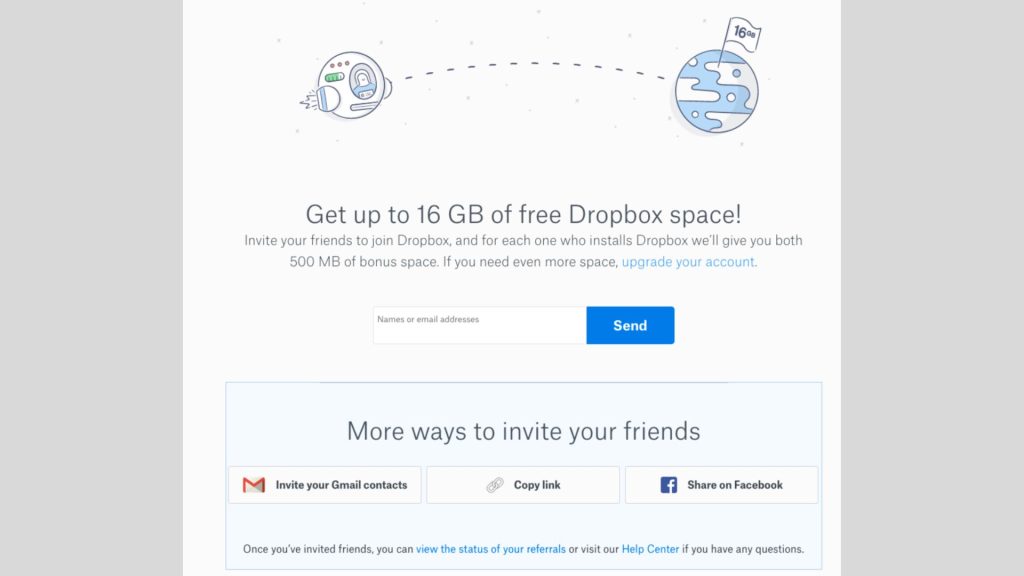
Ever heard of getting extra free space on Dropbox? They offer it to both you and your friend when they sign up and use the referral link.
This encourages you to share Dropbox with people you know. Of course, your invited friends are already familiar with the product. They will probably stay longer with your products or services.
FAQs:
- How many types of referral programs?
Several! Common types include tiered rewards, friend-to-friend invites, and social media sharing programs. Another less-known type of referral is the point system. There’s always a format to fit your brand’s goals and audience.
- When should I start my referral program?
The sooner, the better! A well-designed program can boost new customers and brand loyalty from the get-go. So, don’t wait – the power of referrals is in your hands!
- How many referrals can I expect to have from my referral program?
It depends on various factors like your audience, incentives, and promotion. However, you should focus on value, ease of sharing, and program optimization. Those factors can significantly increase your referral potential.
- How much does a referral software cost?
Costs vary depending on features and scale. You consider free trials and compare options to find software that fits your budget. Investing in the right tool can maximize your program’s impact.
Conclusion
We hope that our guide has explained what is a referral system and how to build a referral program. It is not only about giving gifts; it is about making everyone happy and helping each other. The secret is to keep it simple, be clear, and always keep improving. Finally, you can turn your happy customers into walking billboards for your brand!
The power of a referral system is waiting for you to uncover. No advertising can help your business grow steadily like this marketing method. Now, let’s build your referral program today and see how powerful it can be! If you need further details about referrals, check out other articles to unlock the key!


